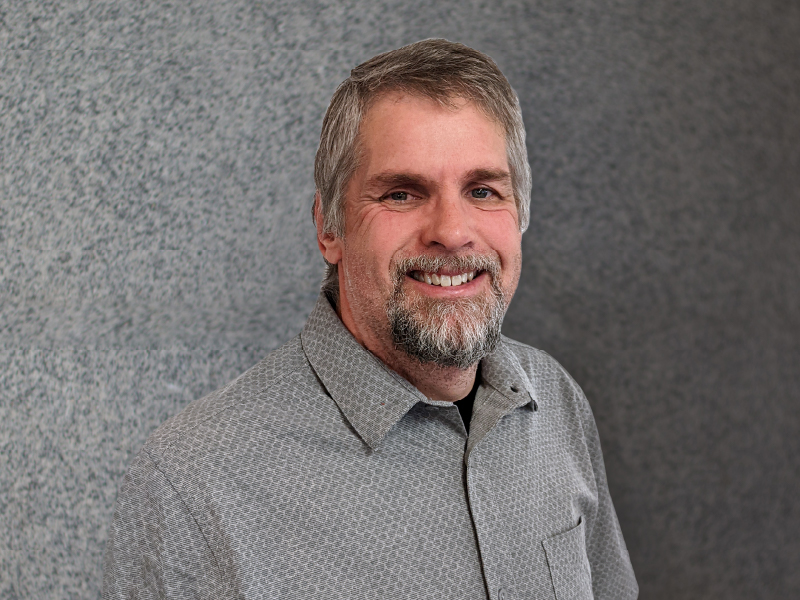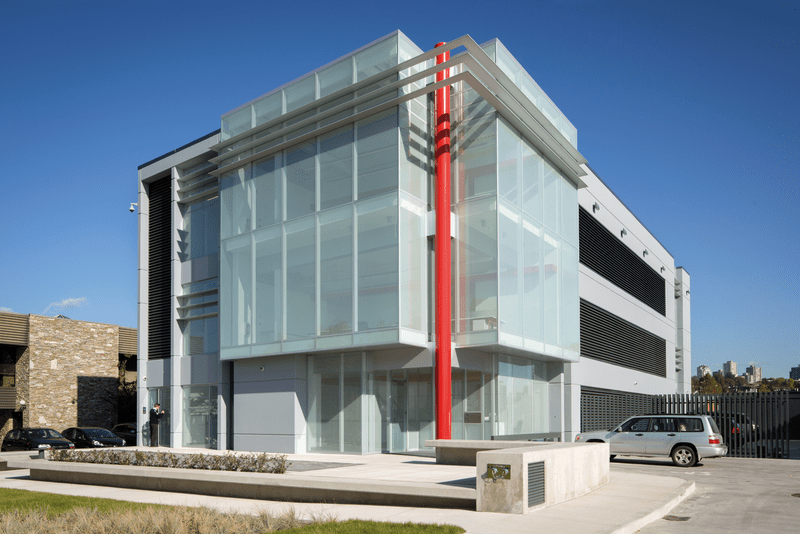A certain data center north of Vancouver went live on Earth Day in 2014. This custom-built, state-of-the art facility boasted an innovative combination of green technologies to achieve maximum efficiency. The three-year project was a $24m capital investment in Global Relay’s future and a demonstration of the company’s commitment to offering scalable, industry-leading cloud solutions with exceptional reliability and security. The company designed the center itself, relied on local talent and supplies for its construction, and coordinated 15 Canadian and American engineering firms to execute the plan.
The center was designed to reduce its carbon footprint from low to zero using a number of green technologies. Murals dating back to 2500 BC depict the Ancient Egyptians as pioneers of evaporative cooling by soaking mats and hanging them in windows and doorways. As air passes through, it accumulates water vapor and cools the building. They were masters at using design and architecture to use this cooling method and control the climate in their homes.
This approach eliminates mechanical air conditioning, typically the largest consumer of power in a data center, and uses water rather than electricity to cool servers. One mega- watt of power from a coal-powered, dirty data center emits significant carbon into the atmosphere. This facility relies on hydroelectric power from local reservoirs which is an energy source that does not create greenhouse gasses.
While supporting the data center’s environmental design constraints was important, it was by no means Global Relay’s only design objective. The company’s data centers also have to support lightning-fast performance.

“Our customers must have fast online access to their data,” says Warren Roy, CEO and Founder. “They expect to be able to query and recover any email or instant message stored on our systems within a couple of seconds.”
It also takes advantage of a cutting-edge network architecture. “The data center was 100% fiber to the rack,” said Duff Reid, co-founder and Roy’s business partner. “This allowed us to form virtual 80 gigabit pipes to each of our switches, ensuring delivery of very high processing speed throughout the facility.”
Unconventional methods
From inception, Reid and Roy took a different view on the design of this first data center. One of the primary goals was to expel hot air, rather than try to actively cool it. They decided to build in a location with a moderate climate where the outside temperature would not get much above 30 degrees Celsius. With a focus on pushing the hot air out, there was potential for a double saving, firstly on capital for the build and equipment, but also on ongoing operating costs.
Their biggest challenge was finding a mechanical engineering company that would believe in the unconventional methods. The duo happened to be at a US tradeshow in 2010 where they discovered that Nintendo had a data lab adopting this very approach. Its mechanical design was similar –taking the air and expelling it through exhausts at the end of the building. When Reid and Roy got in touch with the engineers, it was love at first sight. They were desperate for a client like Global Relay.
“We did it at our pace as we wanted to control it. We are pretty fussy and exacting.”
Duff Reid, co-founder, Global Relay
Downtime at some of the big banks’ data centers can cost $1m a minute. The managers of these centers could not believe what Duff and Roy were doing back in 2011. The data center took three years to design and build, and went live April 22, 2014. “We did it at our pace as we wanted to control it. We are pretty fussy and exacting,” says Reid.
Their flywheel Uninterruptible Power System (UPS), which consists of 660lb steel donuts spinning at high speed that store electricity as kinetic energy, was the other unusual advantage that the center offered. It eliminated the toxic, failure-prone lead-acid battery UPS systems used in most data centers. It also gives some runtime if the power grid goes down before the generators kick in.
Delivers in seconds
Traditional data centers have rooms packed with battery systems designed for the length of runtime required (usually anything from five to 20 minutes). This is a weakness. Even though it is possible to test and maintain these systems, they are more liable to fail during a real event when most needed. Batteries also have to be replaced every three to four years and are a huge burden on the environment.
Global Relay’s rotary flywheel UPS takes some power to run continuously but continues when hydro power fails prior to the generators starting. At full load, this delivers 20 seconds of runtime. Most traditional data centers might need as much as 15 minutes to get their generators online.
By applying proper care and maintenance of a generator system that has been sized properly, the generators will start on time. Special consideration for traditional generators requires avoiding exposure to 100% load immediately. Ideally the generators take 25% more load each minute.
The Global Relay system was sized to take 100% instantly. The two entrepreneurs made the assumption that if a generator does not start immediately, it will take more than 20 minutes to fix it and get it online as they have such big complex engines. They figured that they could go dark for 10 seconds. With three generators and a fourth as spare capacity, the spare would be ready to start if any of the first three did not fire up within five seconds.
The center needed a robust, reliable backup power system, but one that was as ecologically friendly as possible.
Extensive testing of generators
While the facility is located in North America, it was engineered to operate on the mixed 230V/400V standard common in Northern and Central Europe. Incoming utility transformers directly step the voltage down, and the generator sets, UPS, and power distribution operate at 400V all the way to the server rack. This system design reduced operating costs by a further 15% over traditional North American power configurations.
The backup power system features an N+1 generator set configuration, with one generator assigned to pick up the load if any of the primary generators fail. This configuration supplies the additional redundancy needed to ensure the center is operational at all times. It also uses a custom-built automated generator switchboard in place of a parallel generator set configuration.
The arrangement supports four independent phases with a common redundant generator set, allowing Global Relay to shift the load between generator sets in the event of a failure. For additional redundancy, the facility features two active electrical paths to the IT load, as well as a standby wrap-around path direct from the generators.
The center does extensive generator maintenance and employs a rigorous test schedule, with visual inspections once a week and monthly tests where the entire load gets transferred onto the actual generators. Many facilities do not do this as they deem it too risky. Their managers are not convinced all of the other electrical pieces of the puzzle will stand up. In addition, switch equipment might fail. This exposes another vulnerability.
If a center is not prepared to test in a controlled scenario, how can the system be trusted in an uncontrolled emergency? Global Relay tests its center in a structured way. It is phased, with each component singled out in a process, making sure the generators start, then flipping breaker by breaker until everything has been tested. The whole path to the servers is examined, even the power supply. Every server has two sources so there is an A-side feed and a B-side feed that transfers all the way back to different switch gear, different transformers and different generators.
Many of Global Relay’s traditional customers are beginning to realize that processing demand in the public cloud comes with a huge compute cost. This data center offers a competitive advantage to customers using Global Relay’s artificial intelligence (AI) systems to perform real-time analytics. The costs are a fraction of those charged in the public cloud.
“Our customers must have fast online access to their data. They expect to be able to query and recover any email or instant message stored on our systems within a couple of seconds.”
Warren Roy, CEO and Founder
Global Relay is tackling the AI compute challenge with the latest Nvidia GPU chips while exploring super computer architecture at scale. At the same time it is enriching all real-time data flow with tags, and using relationship engines that display these so customers benefit from real-time analytics that demand huge compute.
There are more mandates now to make data centers as green as possible. Free air and evaporative cooling are finally in vogue, even in hotter climes where there will be times of day to take advantage of natural cooling that reduces electrical consumption.
Global Relay was able to embark on its rather innovative build because it was a private company and could afford to do it. It would have been a whole different proposition pitching the plan to the board of a public company 10 years ago.
Challenges – but zero problems
There have been no problems since 2014 when the center opened. It has never gone down. Storms have knocked out power for 30 to 40 hours many times but the center stays lit on its own. Reid and the team are used to getting alerts in the middle of the night when the generators have kicked in on their own.
“We have had challenges and learned a lot along the way. We do hot isle containment, so we have to capture it first. We seal the hot isle so we can control the way the air moves and circulates,” says Reid. “The air comes into the front of the servers and is then expelled out the back, sucked up through the ducts and pushed out the back of the building.”
Global Relay is researching new data center locations on the opposite coast to Vancouver where a moderate climate is essential. “We could go into Maine or Vermont or Nova Scotia. We need somewhere with a reliable low carbon power source but we need to avoid places with regular storms. The Great Lakes might be better than the Atlantic as you still get moderate climate but less power threats and the assistance of evaporative cooling,” mused Reid.
Wherever the next location is, it is a certainty that Global Relay’s approach will be typically innovative and secure, with a firm eye turned on the environmental impact and the best solution for the growing customer base of the business.

















